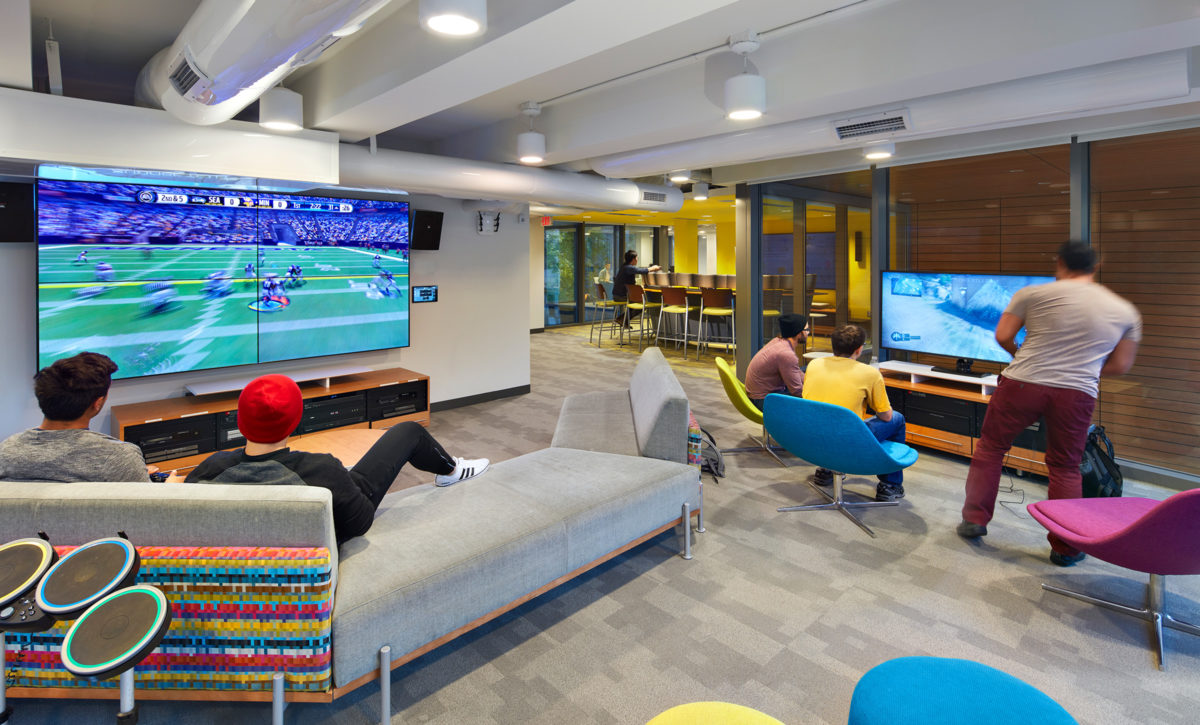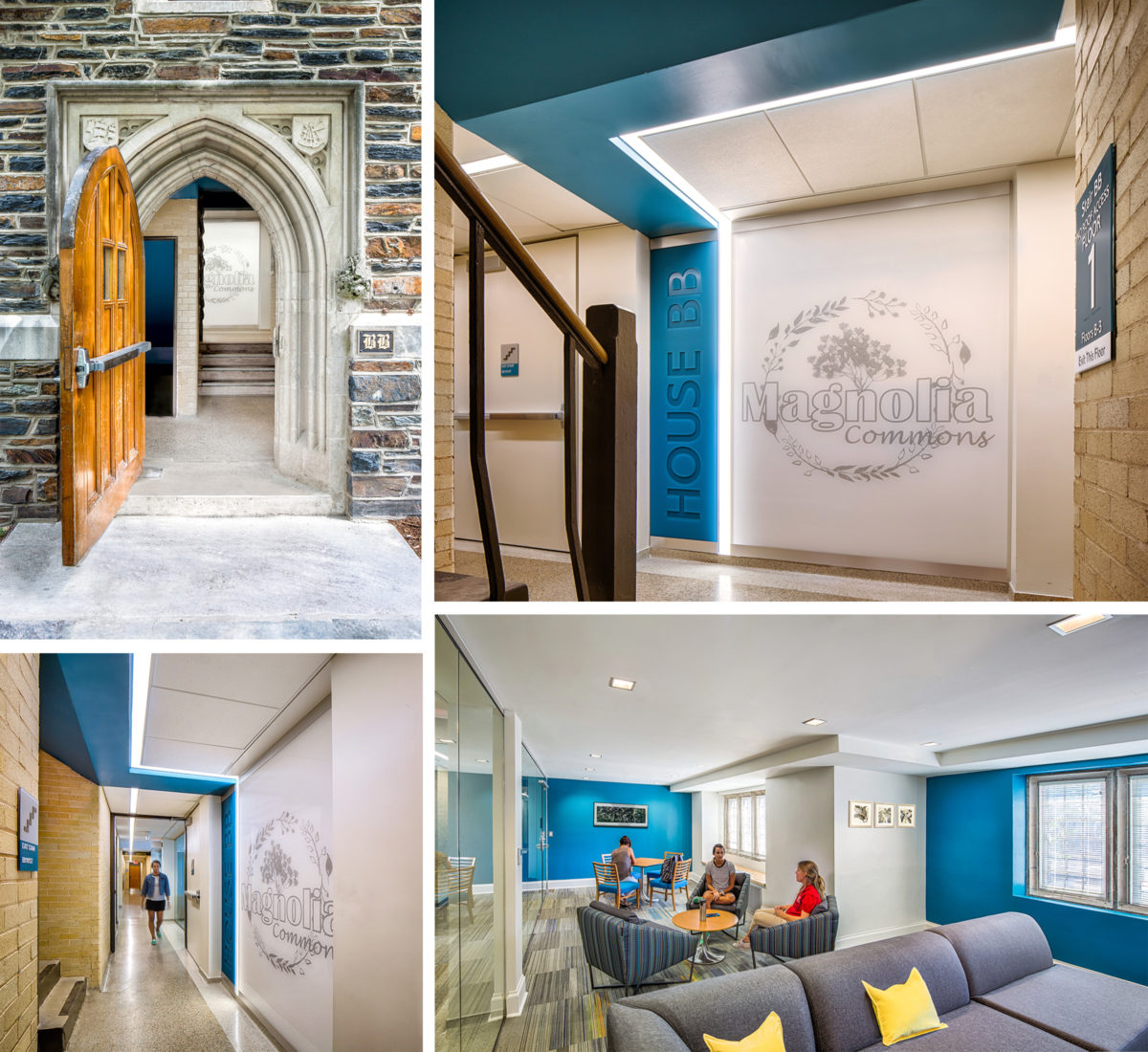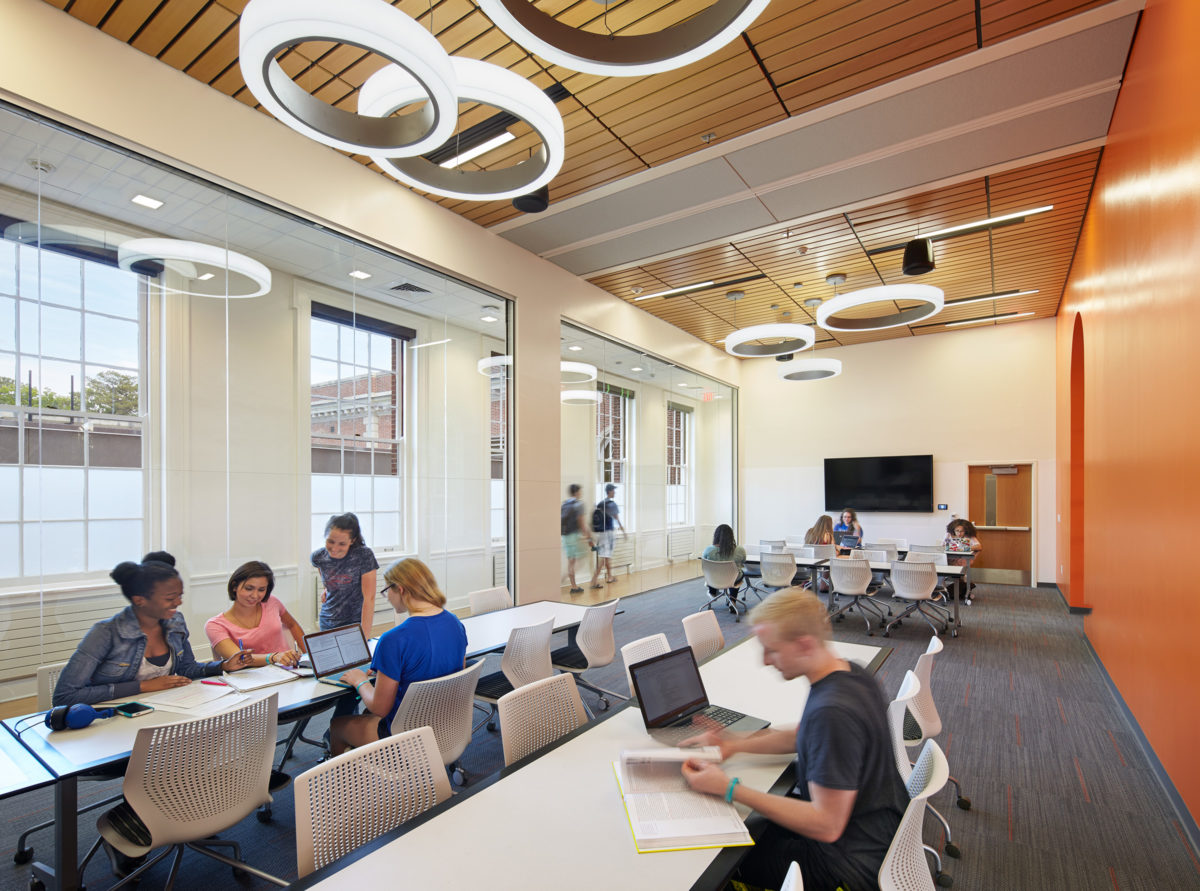A Fresh Look at the Importance of Renovation for Higher Education
 College campuses today are in a constant state of renewal as they compete for top students, faculty, and industry partnerships. The campus arms race for newer, bigger, and better facilities is challenging institutions to deliver these spaces while budgets remain tight. In the following, Clark Nexsen’s Leslie Vollbrecht looks at the role of renovation in campus renewal, presenting lessons from the hospitality model and considering issues of sustainability, cost, and design lifecycle.
College campuses today are in a constant state of renewal as they compete for top students, faculty, and industry partnerships. The campus arms race for newer, bigger, and better facilities is challenging institutions to deliver these spaces while budgets remain tight. In the following, Clark Nexsen’s Leslie Vollbrecht looks at the role of renovation in campus renewal, presenting lessons from the hospitality model and considering issues of sustainability, cost, and design lifecycle.
As an interior designer, I’ve worked with numerous higher education clients on a wide variety of project types, and being on “the cutting edge” is a consistent theme in every design conversation. I understand both the impulse and the necessity – schools are in a tight and constant race to attract students and prepare those students well for their futures. This translates to offering an exceptional experience from residence life, to academics and career placement. But it also presents a fundamental challenge that has yet to be resolved and effectively addressed in higher ed: design is an evolution. Design is constantly evolving, even through the design process, so it’s fallacy to suggest that design is complete when the owner takes occupancy – yet that tends to be exactly how these projects are approached.
College campuses today are in a constant state of renewal as they compete for top students, faculty, and industry partnerships. The campus arms race for newer, bigger, and better facilities is challenging institutions to deliver these spaces while budgets remain tight.
It’s a story line we all know: a “cutting edge” facility is designed and built, the owner moves in, and the facility quickly becomes dated due to the pace of evolving trends and tech. Potentially decades down the road, it is lamented as outdated and, depending on its attributes or historic value, is considered for renovation or replacement. This mentality sets buildings up to fail in the long term – buildings that typically embody significant expense, effort, materials, and quality.

Duke University’s Crowell Quad, for example, epitomizes the school’s renowned Gothic architecture. Its comprehensive renovation created a state-of-the-art residence life experience – with all the modern conveniences – while preserving the historic exterior.
So how do we, as designers, support clients by meeting goals for current, engaging interior spaces and simultaneously establish a realistic plan for ensuring that environment remains relevant, even state of the art, into the future? We have to take lessons from other markets with established renewal cycles, and we have to begin viewing quality, sustainability, and cost differently. Thoughtful, strategic forward planning is critical to delivering facilities that will serve an owner well for a longer period of time.
Using the Hospitality Industry as a Model
I’ve read articles on how higher ed is taking a page from the hospitality industry with regard to amenities, but would argue that there is another, more important lesson to take from the hospitality industry: the established, expected planning for future renovation. Almost before a hotel is open, the refresh is already in mind, on the horizon, and projected in financials.
This is a critical concept as growth on college campuses has created a significant backlog of maintenance and renovation needs. Rather than looking at one cycle, the design and facilities teams should work together to build resiliency into each project, planning for minor refreshes every three to six years (think paint, artwork – the low-hanging fruit that rapidly dates a space); minor renovation every 12 years; and major overhaul every 20 to 30 years. The idea of forecasting today and earmarking future budget will eliminate – or at least minimize – the sticker shock when the day for a major renovation arrives and ensure the facility continues to look and feel updated.
Similarly, hotels consider finish updates and furniture replacement with a focus on style, usage rate, and cost. For example, if you’re replacing furniture frequently, why incur the increased cost of paying for a brand name or a lifetime warranty? Emerging trends and cutting edge materials keep the interior environment engaging and surprising, but acknowledging their threat to long-term relevancy is the first step in creating a renewal plan.
Looking at the Benefits of Renovation
Some of the key value drivers of renovation are its inherently sustainable nature, the potential for cost reduction, and speed of schedule. While there are scenarios in which replacement is the most fiscally responsible choice, renovation typically allows for the reuse of a significant amount of materials and embodied energy. In a presentation for the Society for College & University Planning, Clark Nexsen housing experts detailed the ways in which renovation preserves campus character, typically reduces cost and project timeline, incurs less restrictive code requirements, and promotes sustainability. Bob Gunn says of renovation, “Some of the projects I’m most proud of are renovations. While there’s no question that every campus will continue to need new facilities, I view renovation as a critical component to preserving campus character and strengthening its sense of community. And that’s before considering the substantial benefits related to cost and sustainability.”

The transformation of the East Campus Union preserved the facility’s exterior character while establishing a vibrant center for student life on Duke University’s East Campus. Now much more than dining, the union serves as a place for students to gather socially and collaborate academically.
Emerging research shows that competition – at least in the sense of exorbitant spending in pursuit of new facilities – is bad for higher education, particularly in the current environment where the burden of these costs are increasingly shifted to students. Finding opportunities to reposition, repurpose, adaptively reuse, and renew existing facilities can create a more sustainable, cost effective model for transforming educational opportunities and improving the campus experience.
I believe that by designing for longevity and earmarking future O&M funding, we can develop solutions that spend capital funds in a responsible way and leverage multiple funding sources to benefit each campus facility. I view it as a responsibility of designers to support clients in ensuring higher education remains both accessible and high quality.
Duke Edens Quad Renovation (top) and East Campus Union photographs: Mark Herboth. Duke University's Crowell Quad Renovation photographs: Tzu Chen.

Leslie Vollbrecht, CID, ASID, IIDA, CDT, LEED AP BD+C, is an interior designer who joined Clark Nexsen in 2009 and left to pursue other opportunities in 2019.